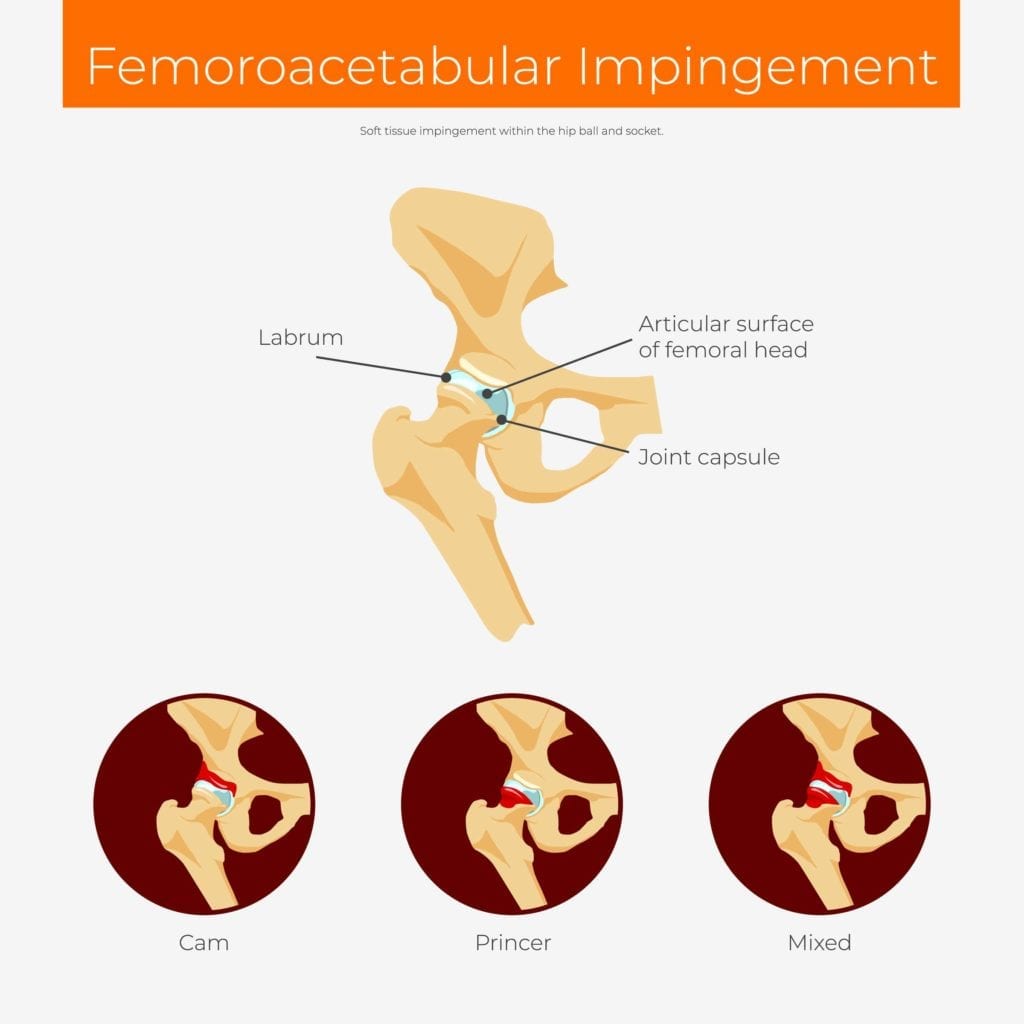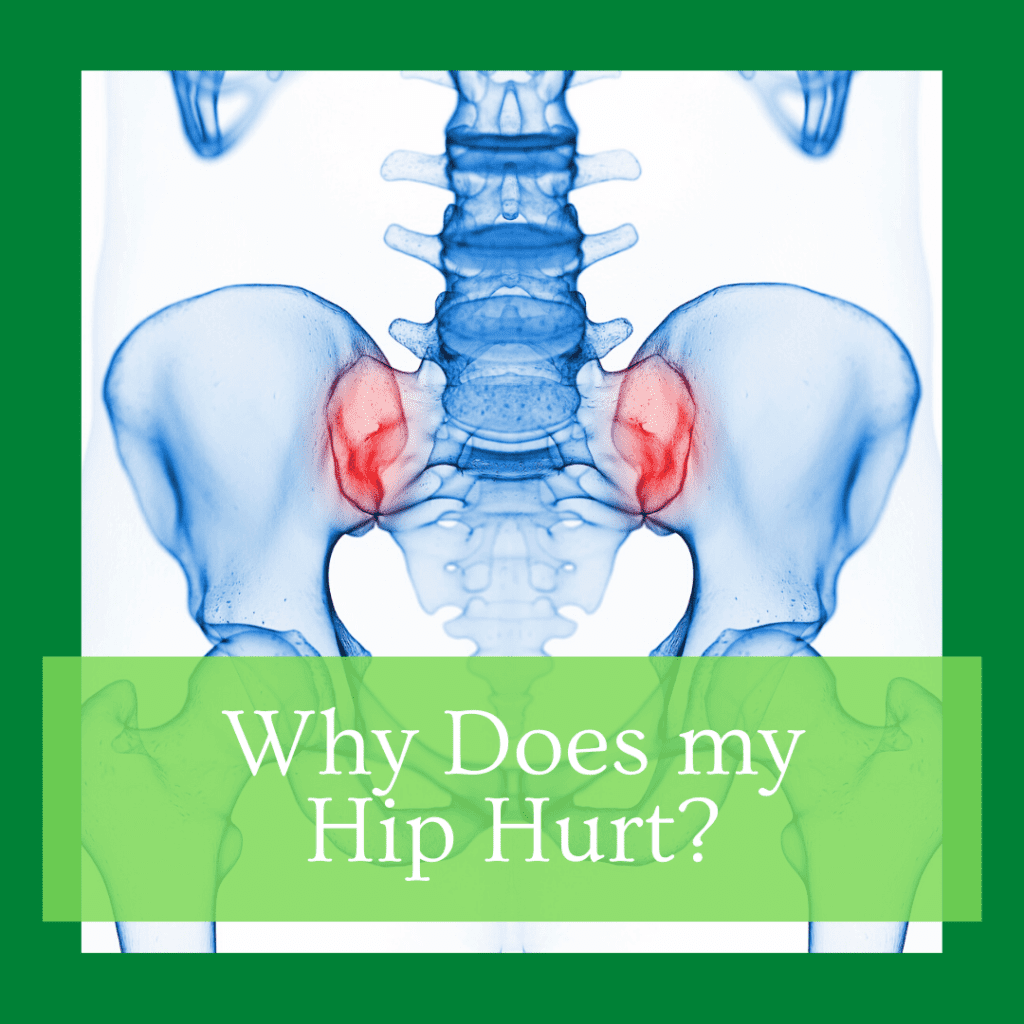Did you know that hip conditions are one of the most undiagnosed or misdiagnosed conditions? Unfortunately, if you have been experiencing hip pain, you probably not only know this, but can understand the frustration of not knowing what is wrong. Although many doctors and chiropractors attribute hip pain to greater trochanteric pain syndrome and osteoarthritis, there are actually other causes of hip pain that are far more common than these two popular diagnoses. Here are four possible answers to the question, “why does my hip hurt”?:

Femoroacetabular Impingement (FAI)
This condition is characterized by an anatomical mismatch between the femur head and the inside of the hip socket that causes cartilage damage. Hip pain associated with femoroacetabular impingement is described as a dull, achy sensation in the inside of the hip or groin. Although this condition occurs on both sides, symptoms usually occur on only one side and can get worse from long periods of sitting, stair climbing, or activities requiring hip flexion and rotation. Cases of FAI are diagnosed by taking x-rays or performing an MRI. FAI can be treated with physical therapy that is focused on increasing the hip’s range of motion, strengthening the joint, and increasing spinal flexibility. It can include stretches for the hips, hamstrings, and quadriceps, as well as balance and abdominal strengthening exercises.
Lumbar Spine Referral
Referred pain is pain that originates in a different location from where it is felt and usually involves pain signals traveling down a nerve. In the case of lumbar spine referral, something in the lumbar region of the spine is being affected in such a way that the pain is felt down in the hip. There can be various causes of this, including: inflamed nerves, ruptured discs, spinal stenosis, and disc degeneration. Oftentimes, chiropractic treatment performed on the lumbar spine will alleviate hip pain.

Hip Dysplasia
This condition is characterized by an acetabulum that is not deep enough to protect the head of the femur, resulting in excess stress on the joint and eventual joint degeneration. In fact, around 10% of hip replacements are performed due to joint degeneration. The primary symptom associated with hip dysplasia is a limp, however other symptoms include pain that increases while sitting, walking, or participating in strenuous activity. In some cases, a catching or popping sensation is also experienced. Symptoms of hip dysplasia can be experienced at any age, but generally start in adolescence or during adulthood.To confirm a diagnosis of hip dysplasia, x-rays and other imaging techniques are used. Treatment for hip dysplasia depends on the age and can vary from bracing techniques to surgery. Physical therapy can also be used to strengthen the tissues around the joint and to improve flexibility, both of which help to decrease painful symptoms.
Inflammatory Spondyloarthritis
Rather than being caused by the anatomy of the body, this condition is due to an inflammatory disease. Symptoms of inflammatory spondyloarthritis include morning stiffness that lasts beyond 30 minutes, pain that improves with exercise and not rest, sleep interruptions in the second half of the night due to back pain, and buttock pain that alternates from side to side. To diagnose inflammatory spondyloarthritis, x-rays of the sacroiliac joints are performed, as well as possible blood tests to test for the HLA-B27 gene. The condition is managed by joint-directed physical therapy exercises based on promoting spinal extension and mobility.

Dr. Clouthier has obtained numerous certifications in various healing techniques such as Nutrition Response Testing, Acupuncture, NueroEmotional Technique, CranioSacral Therapy, and NeuroModulation Technique. He has also taken over 1000 hours in post-graduate training in nutritional and herbal therapies and functional medicine and is currently pursuing an advanced certification from the Institute for Functional Medicine.

